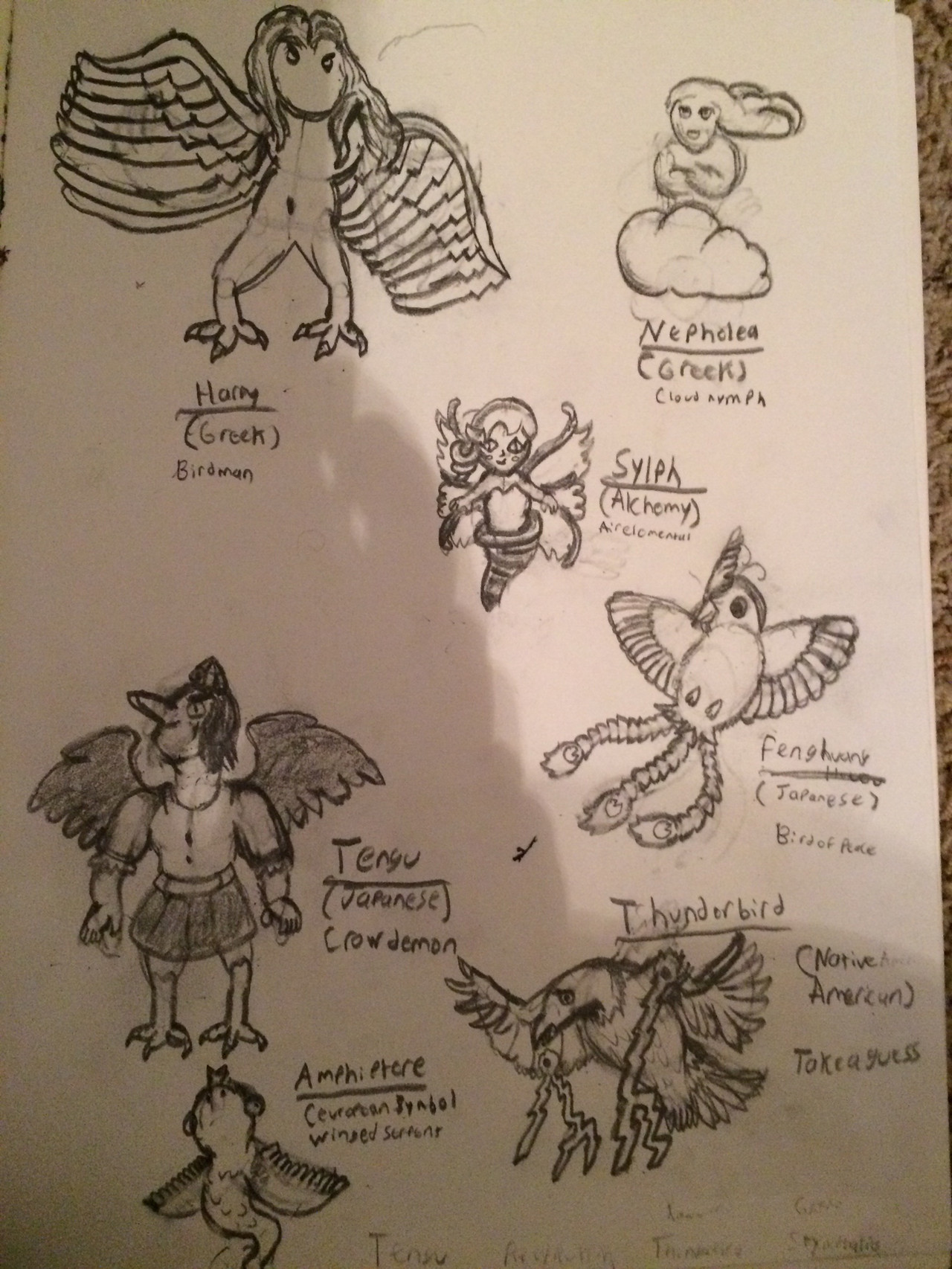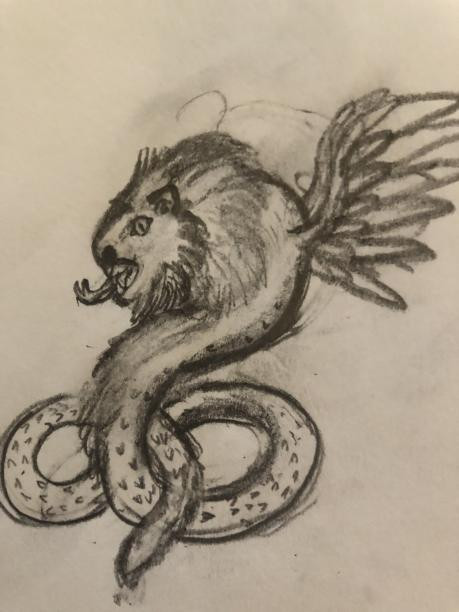HOME | DD
 VforVanarchy — Creatures of Legend: Aerial
VforVanarchy — Creatures of Legend: Aerial

#elemental #fenghuang #greekmythology #japanesemythology #mythicalcreature #mythologicalcreature #nymph #sylph #tengu #thunderbird #youkai #folklorecreatures
Published: 2018-12-14 20:30:41 +0000 UTC; Views: 544; Favourites: 1; Downloads: 0
Redirect to original
Description
Harpies, from Greek myth. Half-human, half-bird. Known for stealing food and being punishers, similar to the furies.Nephele was a cloud shaped like Hera. She was created by Zeus in order to trick Ixion, a murderer who was lusting after Hera. Ixion was chained to a fiery wheel for all eternity, while Nephele produced Centaurus, the father of the centaurs.
Paracelsus was a brilliant, though eccentric practitioner of chemistry, alchemy and medicine. He rejected the notion of the four humors and bloodletting, instead substituting his own theory about three humors: salt, mercury, and and sulfur.
His works list 4 elemental beings, 3 of which he created on his own: Undine, Gnome, and Sylph. Salamanders, the fire elemental, dated all the way back to the Talmud.
Thunderbirds were not just birds of thunder, but also protectors of mankind. The thunderbird controlled the air and had one goal, to fight the underwater spirits that opposed both them and humanity.
In medieval times, people liked to decorate their shield and armor with things known as “charges”. These were emblems that came in a variety of categories, such as beasts, birds, and plants. For “beasts”, often times they just created their own creature by combining a few others. This resulted in things such as a winged serpent or a fish lion.
Tengu means “heavenly dog”, despite clearly being birds. This is likely a derivative of Tiangou, a Chinese demon.
They come in many forms, such as crow, leaf, and monk. Tengu are troublesome demons, known for kidnapping people or possessing women. However, a few of them, such as daitengu, are much more reasonable, although still dangerous
Fenghuang is a Chinese mythical creature that takes the form of a combination of various other birds and also a tortoise. Its feathers are the five colors of the Chinese elements: red for fire, white for metal, blue for wood, black for water, and yellow for earth. In Japanese, it is known as the Hōō.
The winds calm wherever the Fenghuang travels. They will only appear during tiles of peace, and their appearance marks the beginning of a new era.
























